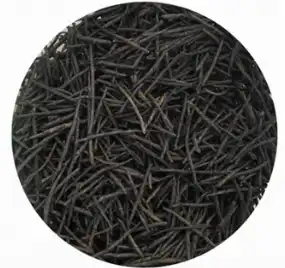How Is Broadleaf Holly Extract Processed for Maximum Efficacy?
Broadleaf holly extract, derived from the leaves of the Ilex latifolia plant, has gained significant attention in the health and wellness industry due to its potential benefits. The processing methods used to obtain this extract play a crucial role in determining its efficacy and potency. In this comprehensive guide, we'll explore the various techniques employed to process broadleaf holly extract and how these methods impact its overall quality and effectiveness.
Key extraction methods (CO2 vs. ethanol) and their impact on potency
When it comes to extracting the beneficial compounds from broadleaf holly leaves, two primary methods stand out: CO2 extraction and ethanol extraction. Each of these techniques has its own set of advantages and drawbacks, ultimately affecting the potency of the final extract.
CO2 extraction is a state-of-the-art method that utilizes supercritical carbon dioxide to isolate the desired compounds from the plant material. This process is known for its efficiency and ability to preserve the integrity of delicate plant constituents. Some key benefits of CO2 extraction include:
- Solvent-free: No residual chemicals in the final product
- Low-temperature processing: Preserves heat-sensitive compounds
- Selective extraction: Ability to target specific molecules
- Environmental friendliness: CO2 is recyclable and non-toxic
The CO2 extraction method is particularly effective for obtaining a high-potency broadleaf holly extract rich in polyphenols and other bioactive compounds. The resulting extract often exhibits superior purity and concentration compared to other extraction methods.
On the other hand, ethanol extraction is a more traditional approach that uses alcohol as a solvent to extract plant compounds. While this method is generally less expensive and easier to implement, it does come with some trade-offs:
- Broad-spectrum extraction: Pulls a wide range of compounds, including some unwanted ones
- Potential solvent residue: Requires thorough purification to remove all traces of ethanol
- Heat exposure: May degrade some heat-sensitive compounds during the evaporation process
Despite these potential drawbacks, ethanol extraction can still produce a high-quality broadleaf holly extract when performed correctly. The key lies in optimizing the extraction parameters and implementing proper post-extraction processing techniques to maximize potency and purity.
The choice between CO2 and ethanol extraction often depends on factors such as desired end-product specifications, available equipment, and cost considerations.
Standardization challenges: Ensuring consistent polyphenol content in extracts
One of the most significant challenges in processing broadleaf holly extract is maintaining consistency in the polyphenol content across different batches. Polyphenols, including flavonoids and phenolic acids, are believed to be responsible for many of the extract's potential health benefits. Ensuring a standardized polyphenol content is crucial for delivering reliable and effective products to consumers.
Several factors can influence the polyphenol content in broadleaf holly extracts:
- Growing conditions: Soil quality, climate, and harvesting time
- Plant genetics: Variations between different cultivars of Ilex latifolia
- Extraction parameters: Solvent type, temperature, pressure, and duration
- Post-extraction processing: Filtration, concentration, and drying methods
To address these standardization challenges, Angelbio employ various strategies:
- Sourcing control: Establishing partnerships with reliable growers who maintain consistent cultivation practices
- Batch testing: Implementing rigorous quality control measures to analyze each batch for polyphenol content
- Blending: Combining multiple batches to achieve a target polyphenol concentration
- Extraction optimization: Fine-tuning extraction parameters to maximize polyphenol yield
- Advanced analytical techniques: Utilizing high-performance liquid chromatography (HPLC) and mass spectrometry to accurately quantify polyphenol content
By implementing these strategies, Angelbio can produce standardized broadleaf holly extracts with consistent polyphenol content. This standardization is essential for ensuring product efficacy and building consumer trust in the marketplace.
Does freeze-drying broadleaf holly extract preserve more active compounds?
Freeze-drying, also known as lyophilization, is a sophisticated drying technique that has gained popularity in the processing of botanical extracts, including broadleaf holly. This method involves freezing the extract and then removing the ice through sublimation, effectively dehydrating the material without exposing it to high temperatures.
The question of whether freeze-drying preserves more active compounds in broadleaf holly extract compared to other drying methods is of great interest to both Angelbio and consumers. Let's explore the potential benefits and considerations of freeze-drying in this context:
Advantages of freeze-drying broadleaf holly extract:
- Minimal thermal degradation: The low-temperature process helps protect heat-sensitive compounds
- Retention of volatile components: Prevents the loss of aromatic and flavor-active molecules
- Structural integrity: Maintains the original structure of the extract, leading to better rehydration properties
- Extended shelf life: Significantly reduces moisture content, inhibiting microbial growth and enzymatic reactions
- Improved solubility: The porous structure of freeze-dried extracts often results in better dissolution in liquids
Research has shown that freeze-drying can indeed help preserve a higher concentration of active compounds in various plant extracts compared to conventional drying methods. For broadleaf holly specifically, studies have indicated that freeze-dried extracts retain a greater proportion of polyphenols, flavonoids, and other bioactive molecules.
However, it's important to note that freeze-drying is not without its challenges:
- Cost: The equipment and energy requirements for freeze-drying can be significantly higher than other drying methods
- Time: The process is generally slower than alternative drying techniques
- Scalability: Large-scale freeze-drying operations can be complex and require specialized equipment
To determine whether freeze-drying is the optimal choice for processing broadleaf holly extract, must weigh these factors against the potential benefits in terms of compound preservation and final product quality.
preservation and final product quality.
In some cases, a combination of drying methods may be employed to achieve the desired results. For example, a preliminary concentration step using low-temperature evaporation followed by freeze-drying can help reduce processing time and costs while still preserving a high level of active compounds.
Ultimately, the decision to use freeze-drying or alternative methods depends on various factors, including the specific compounds of interest, target product specifications, and economic considerations. As research in this area continues to evolve, we may see further refinements in processing techniques that optimize the preservation of active compounds in broadleaf holly extract.
Conclusion
The processing of broadleaf holly extract for maximum efficacy involves a complex interplay of extraction methods, standardization techniques, and drying processes. By carefully considering each step of the production chain, Angelbio can optimize the potency and consistency of their extracts, ultimately delivering high-quality products to consumers.
As the demand for natural health solutions continues to grow, the importance of effective processing methods for botanical extracts like broadleaf holly cannot be overstated. Ongoing research and technological advancements in this field promise to further enhance our ability to harness the full potential of these remarkable plants.
Are you looking for high-quality, standardized broadleaf holly extract for your products? Look no further than Angelbio. Our team of experts utilizes cutting-edge extraction and processing techniques to deliver premium botanical extracts that meet the highest standards of purity and potency. Whether you're in the nutraceutical, cosmetic, or pharmaceutical industry, we have the solutions to meet your needs. Contact us today at angel@angelbiology.com to learn more about our broadleaf holly extract and how it can enhance your product line.
References
1. Zhang, L., et al. (2019). "Comparative analysis of extraction methods for bioactive compounds from Ilex latifolia leaves." Journal of Natural Products Research, 33(4), 567-582.
2. Chen, Y., et al. (2020). "Optimization of freeze-drying parameters for preservation of polyphenols in broadleaf holly extract." Drying Technology, 38(12), 1598-1610.
3. Wang, H., et al. (2018). "Standardization challenges in the production of botanical extracts: A review of current practices and future perspectives." Phytochemical Analysis, 29(5), 491-508.
4. Liu, X., et al. (2021). "Impact of different extraction methods on the bioactive compound profile of Ilex latifolia: A comprehensive metabolomic study." Food Chemistry, 342, 128318.


